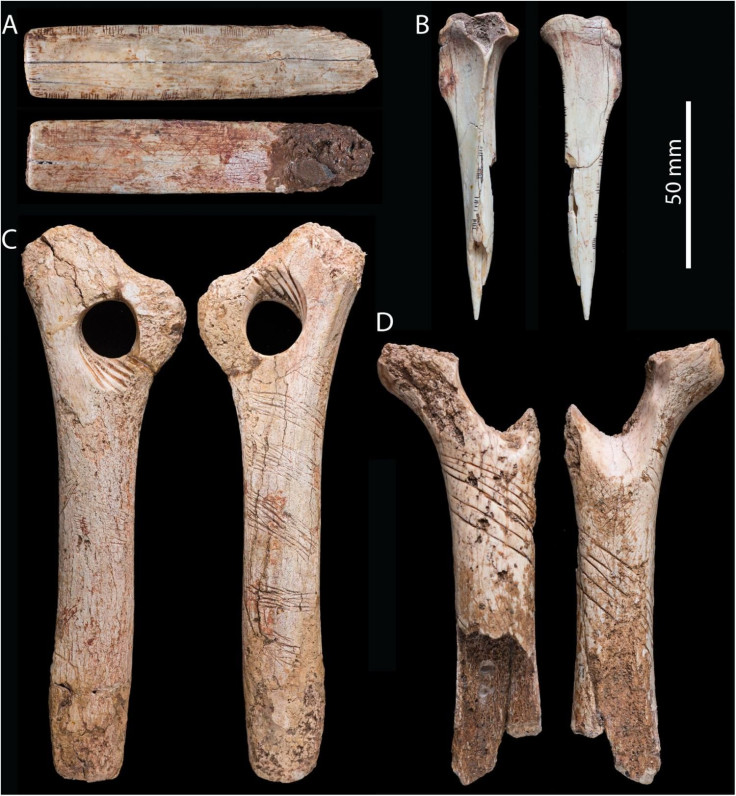Stone Age Cannibals Decorated Human Bones While Butchering Them

Prehistoric cannibals made ceremonial slashes in the bones of the people they ate, according to scientists who studied engraved human bones from millennia ago.
The bones date to between 12,000 and 17,000 years ago, putting them in the late Stone Age. “Cut-marked and broken human bones” were not uncommon during this time in western Europe, according to a study in the journal PLOS One, but certain features were mysterious and scientists wondered whether they were part of a ritual.
Read: Bone Decorations Show Us the Mind of a Neanderthal
A specific bone mentioned is a radius, one of the bones in the forearm, found at the archaeological site Gough’s Cave in England. The study lists cut marks, damage from impact and human tooth marks, as well as the head-scratchers: “a set of unusual zig-zagging incisions” that did not appear to have come from cutting muscle away from bone for consumption.
In the area of Gough’s Cave, archaeologists have previously shown that humans practiced “nutritional cannibalism” and made skull cups. Marks on bones found there were made shortly after the person died and include cuts made while a butcher was disarticulating and scalping the deceased, as well as “filleting” the tissue. The percussion damage found on the remains would have occurred during “marrow and grease processing.”
After comparing marks on both human and non-human remains from the same era to better understand which marks could be made by butchery, the scientists concluded that the additional zig-zagging marks were decorative.
Analysis shows “these modifications are the result of intentional engraving,” according to the study, and the way in which they were engraved fits a “pattern of design” that would have been found in western Europe during that time.
“What is exceptional in this case, however, is the choice of raw material (human bone) and the cannibalistic context in which it was produced,” the study says. While this type of art has previously been recorded for this period, it was generally limited to non-human bones, antlers and ivory being engraved. “The sequence of the manipulations suggests that the engraving was a purposeful component of the cannibalistic practice, implying a complex ritualistic funerary behavior that has never before been recognized for the Paleolithic period.”
Read: Why Was This Ancient Teen With Cancer Buried in Trash at Old Witch Hill?
Without the prehistoric humans on hand to go through their thought process, however, the researchers say it is unclear the exact significance the zig-zagging marks held for them.
Still, they show that the ritual elements of their cannibalistic practices were “rich in symbolic connotations,” researcher Silvia Bello said in a statement from journal publisher Public Library of Science. “Although in previous analyses we have been able to suggest that cannibalism at Gough’s Cave was practiced as a symbolic ritual, this study provides the strongest evidence for this yet.”
© Copyright IBTimes 2024. All rights reserved.





















